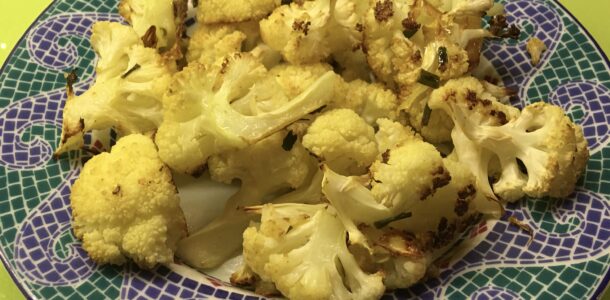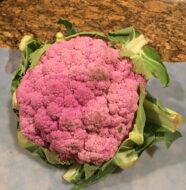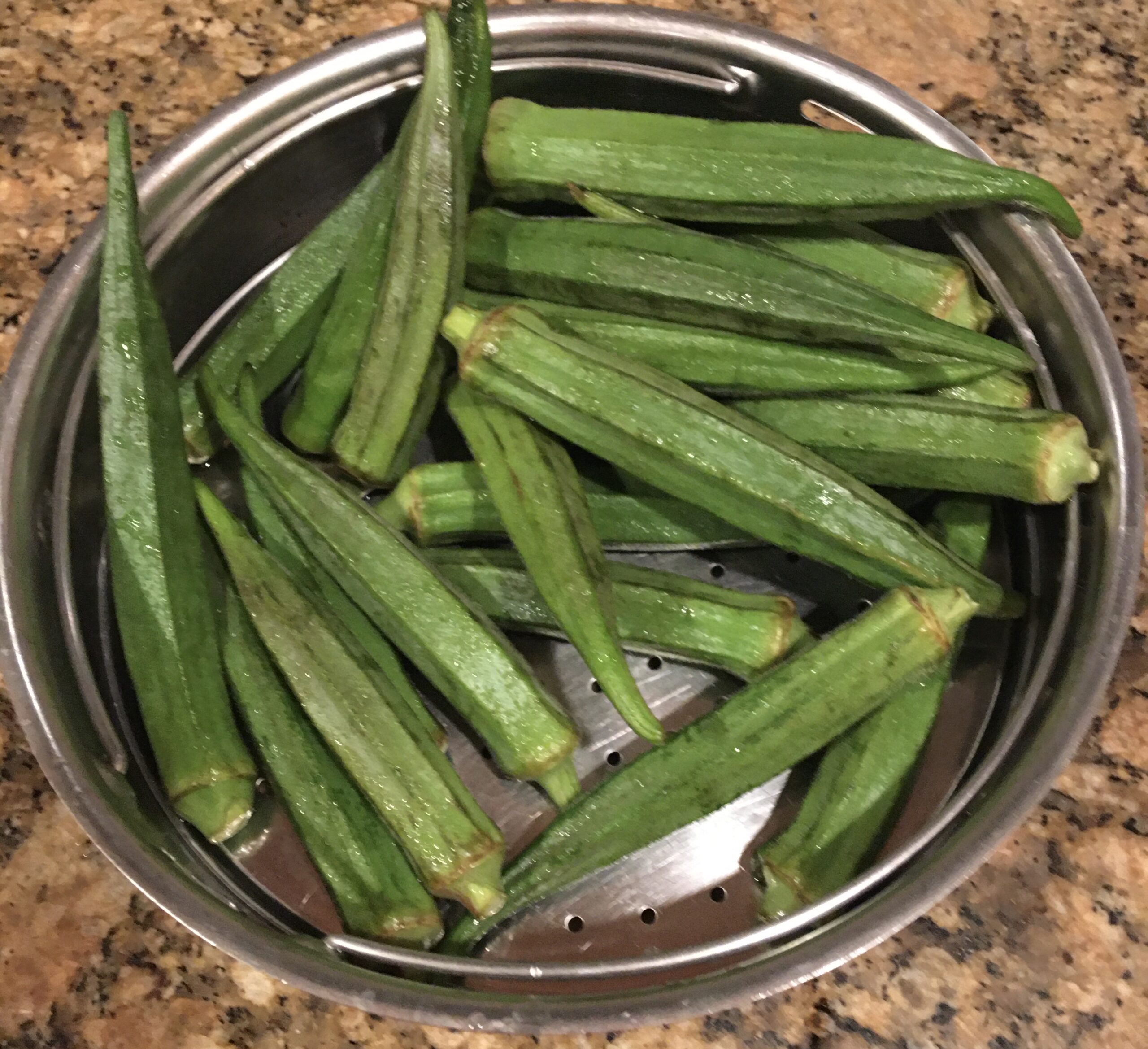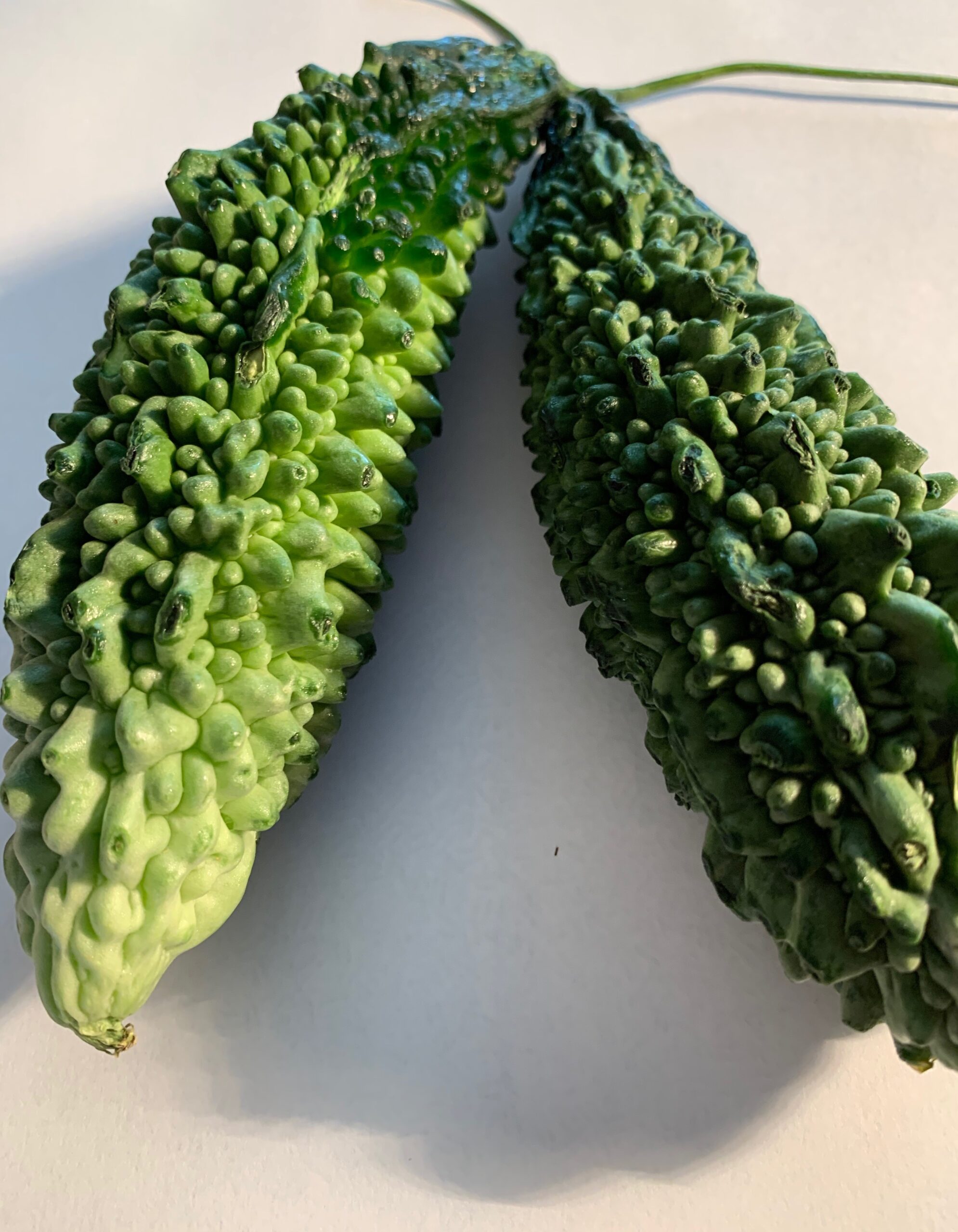Cauliflower according to Mark Twain is cabbage with a college education. Its consumption in any form raw, baked, fried, riced, or cooked can boost heart and brain health. The florets of cauliflower resemble chicken nuggets in looks and taste. In this preparation, florets are cut and sautéed with onions, tomato, and spices. In this method, cauliflower cooks in its own moisture, with minimal loss of nutrients similar to baking in an oven.
Buying & Storage: Choose a firm cauliflower with compact florets. The leaves should be crisp and green with no sign of yellowing. The size of the head doesn’t affect quality. Refrigerate raw cauliflower(stem side down), tightly wrapped for (5 days), cooked (3 days). Other hybrid cauliflower varieties are colorful depending on the type of nutrients stored: green ” broccoflower” due to chlorophyll by cross-pollination from broccoli; purple “graffiti” – the flavonoid Anthocyanin provides the purple color; orange “cheddar” cauliflower contains an immense amount of Beta carotene (vitamin A )
Story: Dulna in the Hindi language means sautéing. The Punjabi and Sindhi community use this method of cooking of sauteing the vegetables in oil with spices. Hot oil helps the spices to permeate throughout the vegetable, especially when cut into small pieces. It also lets them cook in their own moisture thus making them tastier.
Nutrition Facts of Cauliflower (Brassica Oleracia var botrytis) 100g raw
| GI = 15 GL = 2 | Minerals | Vitamins |
| Energy 25 kcal (1%) | Sodium 30 mg (2%) | Folates 57 mcg (14%) |
| Carbohydrates 4.97g (4%) | Potassium 299mg (6%) | Niacin 0.507 mg (3%) |
| Protein 1.92 g (4%) | Calcium 22mg (2%) | Pantothenic acid 0.667 mg (13%) |
| Total Fat 0.28 (1%) | Copper 0.039mg (4.5%) | Pyridoxine 0.184mg (14%) |
| Dietary fiber 2g (5%) | Iron 0.42 mg (5%) | Riboflavin 0.060 mg (4.5%) |
| Cholesterol 0mg (0%) | Magnesium 15 mg (3.5%) | Thiamin 0.05 mg (4%) |
| Vitamin A 0IU (0%) | Manganese 0.155mg (7%) | Vitamin C 48.2mg (80%) |
| Vitamin K 15.5 mcg (13%) | Zinc 0.27mg (2.5%) | Vitamin E 0.08 mg |
Health Benefits of Cauliflower
- High in Fiber: 1 cup of cauliflower has 3 g of fiber 10% of RDA. Fiber feeds the healthy bacteria in the gut that helps reduce inflammation and promote digestive health. Fiber plays a role in obesity prevention due to its ability to promote fullness and reduce overall calorie intake. Studies have shown that a diet rich in fiber like cauliflower is linked with a lower risk of heart disease, cancer, and diabetes.
- Protection from risk of cancer: Cauliflower is a good source of Carotenoid and Flavonoid antioxidants that protect cells from harmful free radicals and inflammation. It is high in Glucosinolates and Isothiocyanates – two groups of antioxidants that have been shown to slow the growth of cancer cells. Additionally, Vitamin C (48.2 mg/100g) is known for its anti-inflammatory effects that may boost immune health and reduce the risk of heart disease and cancer.
Spice Health Powers
- Cumin seeds reduce the risk of diabetes.: A report published in Pharmacological research revealed cumin seeds may help prevent diabetes. Its consumption resulted in a significant reduction in blood glucose and decrease Glucosuria a condition where urine contains too much glucose.
- Turmeric powder prevents arthritis and reduces pain. The topical application of turmeric also reduces pain from arthritis besides turmeric supplements recommended for muscle pain after exercise or injury.
- Ginger may help prevent cancer: contains 6-gingerol in large amounts. In a study, 2 g of ginger extract per day was administered to 30 individuals that significantly reduced pro-inflammatory molecules in the colon. There is limited evidence that ginger may be effective against pancreatic, breast, and ovarian cancer.
- Garlic can combat sickness including the common cold by boosting the functions of the immune system. A 12-week study found that a daily garlic supplement reduced the number of colds by 63% compared to a placebo. The average length of cold symptoms was also reduced by 70% from 5 days in the placebo group to 3 days in the garlic group.
- Green chili: exerts beneficial effects on the cardiovascular system. It reduces blood cholesterol and triglycerides levels, platelet aggregation, and Fibrinolytic activity which prevents the formation of blood clots that can lead to a heart attack or stroke.
- Cilantro Leaves: protect against food poisoning. The leaves not only detox the body but also protect it from infections. Its natural anti-bacterial properties may help protect against food and water-borne diseases including food poisoning and dysentery. Research published in the international journal of food microbiology studied Coriander, Dill, and Eucalyptus and found that Cilantro was effective in fighting Listeriamonocytogens – a strain of bacteria that causes Listeriosis.
Method to cook Cauliflower Sauté (Dulna)
- Cut the base and stems from cauliflower and into florets.
- Soak in water + lemon juice to prevent discoloration. (3 min.)
- Peel and chop onions.
- Peel ginger and garlic. Crush with green chili in a crusher. (5 min.)
- Heat the oil in a frying pan. Add the onions and spices.
- Sauté until the onions turn translucent. (2 min.)
- Add rinsed cauliflower, peas, and sauté until blended.
- Cover with a concave lid with rim; pour 1 cup water on the lid
- Let the vegetables cook on medium heat. (6 min.)
- Continue to stir the vegetables at periodic intervals.(every 2 min.)
- Garnish with washed and chopped cilantro leaves.
- Method 2 Baked Cauliflower :
- Sauté onions with spices; combine with cut florets in a baking pan; bake 20 min.
- Time Saver Method 3 Microwave
- Smear cut florets with spices mixed in oil; add 1/2 cup water and microwave 8 min.
Serve Cauliflower Sauté with Quinoa, Brown Rice, Chapatis, Pasta, or Pita bread.
TIPS
Variation: Combine cubed potatoes with cauliflower
Time saver: Substitute 1/2 tsp.of ginger, garlic, and chili powder for fresh ingredients











